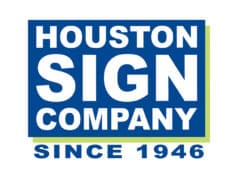
The importance of having a solid brand is indisputable in today’s marketplace. In fact, some companies become known and experience considerable growth purely based on a trend their name has caused, a post that has gone viral, or an image that speaks volumes about the company, even without any words. Exceptional branding can position a company as an industry leader, make it a household name, and draw customers and clients with nothing but its sensory appeal. Basically, it’s what distinguishes you from your competitors.
How do you create that distinction? With the help of public relations, which intentionally and intelligently crafts a public image and builds a brand reputation that sets you apart. Therefore, investing in public relations is a vital step in any company’s growth trajectory, even though it’s often deemed an “invisible investment” since PR focuses on the intangibles of public image and reputation management.
What Are The Elements Of Branding?
Branding itself is an invisible investment. It can’t be put on a shelf or added to a cart to be purchased. And yet this abstract concept translates into very concrete results when it is leveraged creatively and applied skillfully. Let’s take a look at some of the elements that comprise a company’s brand.
1. Name and Logo
The name of an entity or enterprise is its most easily identifiable feature, and you want to be as creative as possible when choosing a brand name, picking something catchy and memorable but also accurate. A brand name does not have to obviously communicate what the product is—consider Pizza Hut vs. Domino’s—but it should be meaningful to the product. Take Nike: not at first apparent to those unfamiliar with Greek mythology, this massively successful sporting shoe company was named after the winged goddess of victory.
When pairing a visual with the brand name, Nike again serves as an example of just how powerful a logo can be. Whether it’s simple or complex, one- or two-dimensional, in color or black-and-white: The Nike swoosh is so immediately recognizable worldwide that the company name doesn’t even need to accompany it on products. That’s how influential a logo can be.
2. Goods and Services
Next, of course, are what the name and logo represent. What it is the company does or provides in terms of consumer goods and services. Impactful branding uses company identity and imagery to point to what the company produces so that the consumer forms a link between the two in their minds. Obviously, you want to have high-quality goods and services. If you fail to meet (preferably exceed) industry standards, it won’t matter how clever your name is or how nifty your logo looks—you can’t build a brand on a bad reputation. Ensuring credibility is a necessary part of sustaining an established brand.
3. Employee Behavior
Another important, but sometimes overlooked aspect of branding is the people representing the brand as its public face to the world. This is another intangible in the marketplace, but when time and effort are invested in training a corps of employees to exhibit the brand the way its creators intended, it can make a tremendous difference in public perception. Think of the extensive training Disney employees must undergo to provide a singular experience to visitors of Disney properties.
4. Company Culture
Creating a brand entails cultivating a culture, and an essential part of that is the corporate practices, including environmental policies, that are respected and upheld within the organization. What the brand stands for, what it will not tolerate, and its mission. Ethics and morality contribute greatly to a brand’s identity, so much thought and consideration should be given to the procedures and regulations put in place to define the company, guide its personnel, and underlie its efforts.
5. Media Presence
Media is so very influential in all spheres of industry now that it’s imperative that the media sees you and then represents you positively. All forms of media—print products, online publications, news outlets, and social media channels—have the power to influence consumers and alter perceptions of any given business. So it’s not just important to get the media’s attention; you want it to shine a spotlight on your greatest strengths and qualities.
Role Of Public Relations In Branding
Public relations is a proven-effective route to maximizing branding impact by heightening awareness, enhancing image, and deepening presence. Getting the word out to the right people at the right time is essential, so organizations that invest in PR see a more significant return on their time and money in the following areas, among others.
1. Brand Awareness
The whole point of a brand is to make your target audience aware of it. You can’t grow if you don’t have a market and you can’t sell if you don’t have customers. So the “invisible investment” of public relations positions you at the forefront of your industry and distinguishes you from your competitors, which in turn generates that recognition and traffic. Increasing brand awareness is a more indirect route to profitability than direct marketing, but it will sell your potential client base on you all the same once they value your name and trust your reputation.
2. Media Relations
Building relationships with the media is an integral piece of the puzzle in building a brand because of how much sway the media holds in our global digital world. Networking with prominent and influential media outlets is a primary function of PR so that clients can receive credible and objective coverage that announces and/or advocates for a brand, which significantly boosts name recognition and public image.
3. Community Events
Community events are a fabulous way to promote a brand. They can come in many forms—launch parties, product sampling, special occasion affairs, charitable fundraisers—but they are most effective when they familiarize the public with what you’re all about. PR campaigns generate this kind of interest and attention and expertly showcase features like your goodwill, social responsibility, and community involvement. You can garner a great deal of customer affection and loyalty with well-planned and well-intentioned community engagement.
4. Image Building
Brand image is rather subjective as it represents an individual’s mental conception, not something they can hold in their hand or post on their wall. In this way, this seminal service of public relations is another invisible investment, but fundamental nevertheless. At core, all PR efforts are aimed at forming the best possible image of a company; once you’ve gained that with appropriate public relations strategies, you capture superior positioning in the consumer mindset and move to the forefront of your industry.
Are Invisible Investments Worth It?
Just because you don’t immediately feel the effects of invisible investments, that doesn’t mean they’re not working behind-the-scenes to elevate your brand. Invisible investments are thus deserving of your time and money because of the enormous contributions they can make to your sphere of influence and market base. Public relations is one of the most potent tools you can wield when it comes to people recognizing your brand, and the quality of the public relations team you hire is what will make you remembered above all others in your target market.








